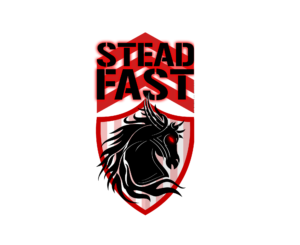
As someone who’s spent countless hours on the mat wrestling, faced off in football trenches, and pushed their limits pursuing that ever-increasing max volume, I understand the relentless drive to push harder. I remember the thrill of adding another plate to the bar or grinding out those last reps. But I also know the dark side—overuse injuries, burnout, and the frustration of seeing no progress despite giving it my all.
If you’ve been there, stuck in a loop of more exercise and stricter dieting without results, you’re not alone. If you’ve fought tooth and nail but feel like they’re running on a hamster wheel, keep reading.
In my journey, I’ve seen firsthand how the “more is better” mindset can lead us down a dangerous path. Whether you’re trying to drop weight, gain strength, or simply improve your fitness, there’s a tipping point where pushing harder actually sets you back. It’s a lesson that took me years to learn, and I’ve watched hundreds of clients grapple with the same struggle. It’s time to step back, reassess, and find a more sustainable path to achieving your goals.
So what are some of the hidden costs of overdoing it?
1. Burnout and Mental Fatigue
When you’re constantly pushing your body to its limits, it’s only a matter of time before you hit a wall. Burnout is a real concern and can manifest as both physical and mental fatigue.
For instance, one of my clients, Sarah, was exercising six days a week, following a very low-calorie diet, and yet saw no progress on the scale. More importantly, she felt drained, irritable, and was losing her passion for fitness.
This type of burnout isn’t just demotivating; it can be downright dangerous. A study in the Journal of Psychoneuroendocrinology has shown that excessive exercise can lead to elevated cortisol levels, a hormone associated with stress. High cortisol levels can, in turn, lead to weight gain, particularly around the midsection, and can interfere with your body’s ability to recover from workouts.
This creates a vicious cycle where you push harder and see fewer results, leading to even more frustration.
2. Hormonal Imbalances and Metabolic Adaptation
When you chronically under-eat or over-train, your body goes into a state of conservation. This means it becomes more efficient at using the calories you give it, which can result in a lower metabolic rate. This is often referred to as “metabolic adaptation.”
Your body is smart—it will do everything it can to preserve energy and maintain homeostasis, even if that means sabotaging your weight loss efforts.
Women, in particular, are susceptible to hormonal imbalances caused by excessive training and dieting.
I’ve worked with many female clients who experienced irregular menstrual cycles, hair loss, and fatigue—all signs that their bodies were under too much stress. It’s crucial to listen to these signals and adjust your training and nutrition accordingly.
Please read the study if you’re more interested.
3. Risk of Injury
The more you train, the greater your risk of injury, especially if you’re not allowing adequate time for recovery. I’ve seen clients with repetitive strain injuries, tendinitis, and even stress fractures from pushing their bodies too hard.
Remember, rest and recovery are just as important as the workouts themselves. Your muscles need time to repair and grow stronger, and your mind needs a break from the constant physical strain.
Finding Your Optimal Effective Dose
So, if more isn’t always better, how much is enough? This is where the concept of the Optimal Effective Dose (OED) comes in. The OED is the sweet spot between doing too little and too much, where you see the best results without compromising your health and well-being.
Step 1: Set Clear, Realistic Goals
Before you can determine your OED, you need to be clear on what you want to achieve. Is your goal to lose weight, build muscle, or simply maintain your current fitness level? The clearer you are about your goals, the easier it will be to create a plan that works.
Step 2: Assess Your Current Routine
Take an honest look at your current exercise and diet regimen. Are you constantly sore, tired, or dreading your workouts? These are signs that you may be overdoing it. On the flip side, if you’re not seeing any progress, you may need to up the intensity or frequency of your workouts.
Step 3: Make Adjustments and Monitor Progress
Experiment with small changes to your routine. Try reducing the number of high-intensity workouts and adding more low-impact, restorative activities like yoga or walking. Monitor how your body responds over a few weeks and adjust as needed.

Implementing a Sustainable Plan
When building a sustainable fitness and nutrition plan, consider these key components:
1. Balanced Training Plan
Include a mix of strength training, cardiovascular exercise, and flexibility work. Aim for 3-4 days of moderate-to-high-intensity workouts, supplemented with active recovery days that could include light yoga, stretching, or a leisurely walk.
2. Nutrition That Fuels Your Body
Instead of cutting calories drastically, focus on eating nutrient-dense foods that support your activity level. Protein is essential for muscle repair and growth, while complex carbohydrates provide the energy needed for intense workouts. Don’t shy away from healthy fats, as they are crucial for hormone production and overall health.
3. Prioritize Recovery
Sleep, hydration, and active recovery techniques like foam rolling or massage should be staples in your routine. Remember, gains are made during recovery, not just in the gym.
Mark’s Story
A few years ago, I worked with a client named Mark, who was the epitome of dedication. He was in the gym six days a week, following a restrictive diet, and still not seeing the muscle gains he wanted.
After a thorough evaluation, it became clear that Mark was overtraining and under-eating, which led to a hormonal imbalance and a drop in his testosterone levels—a critical hormone for muscle growth.
By reducing his workout frequency to four days a week, increasing his caloric intake, and incorporating active recovery techniques, Mark saw a dramatic improvement in both his muscle mass and energy levels within three months.
Avoiding the Pitfalls: Common Myths Debunked
Myth 1: You Have to Feel Sore After Every Workout
Many people equate soreness with an effective workout. While some muscle soreness is normal, especially when starting a new program, constant soreness can be a sign of overtraining. The goal should be to feel challenged, not incapacitated.
Myth 2: Cardio Is the Best Way to Lose Weight
While cardio can be a useful tool for weight loss, it’s not the only or even the best method. Strength training builds lean muscle, which increases your resting metabolic rate, helping you burn more calories even when you’re not working out.
Myth 3: You Need to Eat Less to Lose Weight
Chronic under-eating can lead to metabolic slowdown and muscle loss, making it harder to lose weight in the long run. Instead of slashing calories, focus on a balanced diet that supports your activity level and promotes overall health.
Conclusion
In my years of experience, I’ve learned that fitness and health are marathons, not sprints. It’s not about how much you can do but about how much you can sustain. If you’re feeling stuck or burnt out, it may be time to rethink your approach. Remember, more isn’t always better, and sometimes, doing less can actually help you achieve more.
References
-
Rimmele, U., et al. (2009). “The level of physical activity affects adrenal and cardiovascular reactivity to psychosocial stress.”
Psychoneuroendocrinology, 34(2), 190-198. -
Kreher, J. B., & Schwartz, J. B. (2012). “Overtraining syndrome: A practical guide.”
Sports Health, 4(2), 128-138.

